The Golden 70s Through Film
By Catherine Zhou

Jonathan Kirshner
Jonathan Kirshner is currently the Professor of International Political Economy at Cornell University. His other notable works include American Power after the Financial Crisis and Appeasing Bankers, for which he won the best book award from the International Security Studies Section of the International Studies Association.
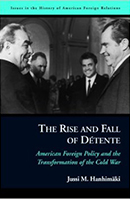
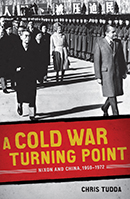



From political upheavals to social liberation, the 1970s paved the road for change in the film industry. In essence, the 70s was a revisionist period in which filmmakers redefined their portrayals of American life. Calling it “the decade when the movies mattered” in his book Hollywood’s Last Golden Age, Jonathan Kirshner notes the shift in theme and structure of 70s films that was prompted by the various social and political issues of the decade.1 Hollywood’s golden age was molded by a sense of freedom due to the end of censorship, women’s liberation, and the sexual revolution. Simultaneously, the decade was tainted by disillusion and skepticism brought on by the scandals of the Nixon presidency and the end of the postwar economic boom. Through his work, Kirshner discusses the structure of the 1970s films and the contemporary issues that impacted them.
In reality, the “New Hollywood” encompassed the period from 1967 to 1976. This revolutionary era in American film was first brought on by the end of censorship in 1966. Kirshner acknowledges the reasoning behind government censorship: to create films suitable for all audiences. Films had to be moralizing and had to teach the clear differences between right and wrong, to “trust authority and institutions, and to be assured that good will triumph over evil.”2 However, by the mid 1960’s, movies began to take a more liberal approach. Kirshner claims that the war in Vietnam made a profound impact on the films of the 70s; namely, the way violence was depicted. What filmmakers once believed to be too explicit was now considered a harsh but necessary narration of reality. News reports with images of violence in Vietnam prompted movies to depict “violence that hurt, violence with consequences.”3 A movie that Kirshner believed to exemplify this new approach in filmmaking was the 1967 film Bonnie and Clyde. The biographical film recreates the lives of the infamous couple who travelled across the country, killing people and robbing banks. The story itself is well known to many; however, the film’s new approach towards the depiction of violence shocked the audience, causing a widespread controversy. In the movie, the police were brutal and violent while the supposedly dark, criminal protagonists were presented with warmth, preying on the sympathies of the audience. Kirshner notes that it was this idea of moral ambiguity that became a common motif in the films of the 70s. Bonnie and Clyde’s vivid portrayal of violence and moral uncertainty represented the tumultuous environment that changed the films of the era.
Domestically, many movements such as the sexual revolution and women’s liberation also began impacting the ideas presented in film. By the end of the 1960s, the concept of sex without the expectation of marriage was widely accepted among young adults. The end of censorship also allowed filmmakers to indefinitely explore the concept of sexuality in adult relationships. Kirshner lists the 1969 film Bob & Carl & Ted & Alice as a prime example of the newfound freedom of the New Hollywood filmmakers. The movie centers around two couples that discover sex as a mere physical act, who then engage in their own adulterous affairs, rejecting the orthodox notions of marriage. BCTA represents not only the effect of the sexual revolution but also the “changing relationships between women and men.”4 The differing views of sex and marriage contributed to the rise of a new movement: women’s liberation. Starting in the early 70s, women began to marry later due to factors such as oral contraceptives, feminist novels, and increasing applications to professional degree programs. Throughout the decade, the women’s movement became an enduring force. However, as every film can be interpreted differently, critics had differing views on the impact the movement had on the New Hollywood. Kirshner questions whether Hollywood’s golden age was actually a misogynistic era with backwards views of women. In fact, the author highlights the misogynistic aspects of the 70s film, incorporating film critic Molly Haskell’s beliefs that the sexual revolution had “re-imprisoned women in sexual roles, but at a lower and more debased level.”5 The book offers proof of Haskell’s arguments by listing movies such as The Lady from Shanghai and Out of the Past that contain manipulative female protagonists who use their sexuality as their weapons. However, Kirshner also agrees that many films did feature strong female characters, including Bob & Carl & Ted & Alice, a movie exploring sexuality that also touches upon the issue of sexual double standards and provides true development for its female leads. The book outlines the parallels between the liberal social movements of the 1970s and the impact they had on film. While the sexual revolution held significant influence on the bold depictions of sexuality, the impact of the women’s movement on film remains ambivalent to the author.
Just as the 70s was a time of liberation and freedom, it was also a decade of disillusion and distrust. The scandalous presidency of Richard Nixon cast a dark shadow on the films of the era, causing a decline in public trust of the government. “Nixon” figures could be easily identified throughout the New Hollywood films as “corrupt, red-baiting, [and] hypocritical.”6 The most “Nixonian” of them all, the book claims, is the character of Michael Corleone in The Godfather, Part II (1974). Callous but strategically astute, Corleone becomes increasingly obsessed with his enemies and isolated from his family and advisers, traits that Kirshner deems reflective of Richard Nixon. The author admits that the disillusioned atmosphere of the 70s could not entirely be blamed on Nixon. Even so, the Nixon administration “took a tire iron to the public faith” with the infamous scandal of Watergate.7 In fact, he claims, Nixon inspired a new subgenre in film: the paranoid thriller. This is shown explicitly in Pakula’s The Parallax View (1974), a film Kirshner dubs “the mother of all conspiracy movies.”8 Shot when the Senate Watergate hearings were taking place, the film is the second installment of Pakula’s Political Paranoia trilogy alongside Klute (1971) and All the President’s Men (1976). The motive of Pakula’s conspiracy films was to create an environment of distrust, even within the audience, directly reflecting the political atmosphere that surrounded the time period. Hollywood’s Last Golden Age discusses the new paranoid thrillers of the 1970s as exemplifications of the darker side of the New Hollywood, prompted by the political upheavals and scandals of the decade.
Adding on to Nixon’s presidency, the 70’s sluggish economy also brought about what Kirshner called “anxious times, an era of uncertainty.”9 The post-World War II economy was known as the golden age of capitalism, a time in which America was a land of opportunity and hard work paid off with much success. However, by the 1970s, the postwar economic boom had ended, increasing public anxiety and decreasing material expectations. This negative side of capitalism is shown in films such as Point Blank (1967), a film that represents the gray area between crime and corporate capitalism. Most importantly, Kirshner states, the declining economy contributed to a negative psychological effect on the American people, “provoking an existential crisis of confidence.”10 This anxious atmosphere provided for another signature film of the seventies, the 1976 movie Network. Kirshner claims Network addressed practically every issue occurring at the time, from the declining economy to gender conflict. More importantly however, Network is a satirical film about the influence of television on society, bringing to the table the problem of the rapidly expanding market. The book argues that the film is about the “encroachment of economic pressure into areas traditionally under the purview of social and cultural values.”11 This topic additionally impacts many other films of the decade, addressing questions of where the market should rule. Alongside the scandalous Nixon presidency, Kirshner adds the end of the postwar economic boom to the causes of the dismay that influenced the gloomy aspects of New Hollywood film.
Kirshner’s Hollywood’s Last Golden Age is a book that discusses in depth the different social and political issues and how they impacted the content of the 1970s films. Kirshner believes that the 70s films were deeply and “deliberately enmeshed with the political, social, and cultural concerns of its day.”12 In other words, the films of the golden era were a direct reflection of the contemporary events that surrounded them and the general sentiment of the public caused by them. From the end of censorship in 1966 to the beginning of Jimmy Carter’s presidency in 1976, Hollywood’s golden age was defined by both social liberalism and political skepticism. Kirshner’s work addresses all the major events of the era as well as how they impacted the film industry. The sexual revolution and women’s liberation movement contributed to the depiction of sexual freedom and gender conflicts provoked by the end of censorship. At the same time, the stagnating economy and the outrage of the Nixon presidency darkened the golden 70s. Using examples of multiple well-known movies such as The Godfather, Part II and Bonnie and Clyde, Kirshner describes the New Hollywood films as products shaped by 1970s society.
As noted in his book, Kirshner began discussing the content of film in the form of arguments with friends during his college years. To him, the extent of his heated debates was how he could measure the significance of a good movie. He began to drift towards movies of the 1960s and 1970s because of the discussions they provoked. The author was additionally “enticed by the social and political events of the period”, and thus began his fascination with the New Hollywood film industry.13 Currently, Jonathan Kirshner is the Professor of International Political Economy at Cornell University. His teachings focus on political economy and film. Other notable works of the author include American Power after the Financial Crisis and Currency and Coercion.14 His professional focus on politics and economy was demonstrated in a large portion of the analysis in the book. The book relates many of the political and economic issues of the 1970s to the motifs presented in film, which Kirshner analyzes thoroughly with his knowledge of the topics.
Seeing that the book was written within the past decade, it shows the “growing literature in film studies on this era” and the renewed interest of social scientists to dive in to the films of the 70s with reference to their cultural background.15 Kirshner’s analysis of films also demonstrates the present day social changes and political views with his take on sexuality, gender roles, and Richard Nixon. In present day America, the fight for gender equality has become an unwavering force, shown in Kirshner’s commentary of 70s films through a feminist lens. Additionally, his ideas of Nixon’s controversial presidency reflect present day views of the tumultuous politics of the 70s. Nixon’s administration is now most often associated with the scandal of Watergate, a conclusion that Kirshner reinforces by analyzing film within the context of this event. Through his book, Kirshner reflects the social and cultural background of the 70s through the eyes of the 21st century.
In his critical review, Nathan Holmes remarks that Kirshner offers compelling views of social transformations in his work. Holmes notes the ambiguity discussed in the book within the counterculture in regards to the roles of women, concluding that Kirshner wrote persuasively about the topic. Furthermore, Holmes compliments Kirshner on his analysis on the political aspects of film, stating that Kirshner’s “ongoing characterization of the corruption of the Nixon presidency…is particularly well rendered and often chilling.”16 However, Holmes also acknowledges a disagreement he has with Kirshner’s approach. To him, Kirshner’s belief that the New Hollywood was the last golden age is greatly underestimating the “expanding cinematic geography” that took place after the 70s.17 In another review, Daniel Rasmus offers the same opinion, stating that Kirshner’s belief is a broad generalization. However, Rasmus also claims that Kirshner’s book is “a meaningful addition” to the knowledge of film students and books like that are needed to “chronicle history.”18 In his review, Rasmus recognizes that Kirshner seems to prefer the films of the 70s that retain a certain social or political message. He then states that Kirshner’s analysis helped him develop an appreciation for 70s film but did not necessarily drive him to want to view those films. Both reviewers believe that Kirshner’s analysis is both compelling and accurate while also disagreeing with his idea that the 70s was the last golden age of film.
Hollywood’s Last Golden Age encapsulates the major films of the period from 1967 to 1976 in the context of the contemporary events that influenced them. Kirshner provides brief but informative summaries of social movements such as the sexual revolution and political scandals such as Watergate followed by the different films that reflect them. He incorporates feedback from multiple critics of the time while still involving his opinions in the context of each film as well as the topic of New Hollywood as a whole. Through his work, the reader is able to view each film objectively and through the eyes of several critics with multiple perspectives - some of which are the author’s own. Although excellent movies have been created both before and after this time period, Kirshner argues that there was “something special and meaningful and important about the period 1967 to 1976 for mainstream American movies” - and successfully proves it.19 Through his vivid descriptions of each movie and incorporation of background information, Kirshner portrays the 1970s as a truly magical time for Hollywood filled with unprecedented ideas and tactics in film. Kirshner’s book nudges readers towards a renewed interest in the study of film and a greater appreciation for what he believes to be the golden age of Hollywood.
The 1970s, as depicted in Kirshner’s book, was a time of social, political, and economic change. The social changes involving the fight for gender equality and the unrestrained exploration of sexuality was more evident in the 70s than in the 60s - especially in film. Attitudes in the 70s became increasingly more liberal from those of the previous decade, creating a distinct divide between films and other cultural aspects of the 60s and 70s. However, in regards to the economic decline and political scandals that marked the 70s, Kirshner acknowledges that it was an era of blatant distrust. The atmosphere of the 1970s was damaged by the betrayal of the Nixon presidency and the declining economy. Scandals such as Watergate shattered the public’s confidence in the executive branch of the government while the failing economy no longer lived up to material expectations of the baby boomers. Thus rose a decade of unprecedented ideas “shaped by the omnipresent social and political upheavals of the era” and epitomized by the new approaches taken in 1970s film.20 Just as Kirshner argues, the atmosphere of the 1970s diverges almost completely from its predecessors, resulting in a dramatic impact on American mainstream culture.
The idea that “something new and special emerged from Hollywood in the decade from 1967” is recognized by most critics and scholars from the film industry.21 Nevertheless, Kirshner took it upon himself to prove it to the general public. Although the 1970s was a fluctuating period of liberation and disillusionment, out of it came a golden era that would forever make an impression on the film industry.
Footnotes:
- Kirshner, Jonathan. Hollywood’s Last Golden Age. Ithaca: Cornell University Press, 2012. 4.
- Kirshner, Jonathan. 5.
- Kirshner, Jonathan. 15.
- Kirshner, Jonathan. 80.
- Kirshner, Jonathan. 84.
- Kirshner, Jonathan. 134.
- Kirshner, Jonathan. 151.
- Kirshner, Jonathan. 157.
- Kirshner, Jonathan. 196.
- Kirshner, Jonathan. 196.
- Kirshner, Jonathan. 203.
- Kirshner, Jonathan. 3.
- Kirshner, Jonathan. 1.
- “Faculty.” Department of Government at Cornell University. Cornell University. Web. 31 May 2015.
- Kirshner, Jonathan. 1.
- Holmes, Nathan. “Jonathan Kirshner, Hollywood’s Last Golden Age: Politics, Society, and the Seventies Film in America.” Journal of American Studies. Cambridge Journals. Web. 31 May 2015.
- Holmes, Nathan. “Jonathan Kirshner, Hollywood’s Last Golden Age: Politics, Society, and the Seventies Film in America.” Journal of American Studies. Cambridge Journals. Web. 31 May 2015.
- Rasmus, Daniel. “’Hollywood’s Last Golden Age’ Offers an Academic Love Letter to ‘70s Films.” PopMatters. Web. 31 May 2015.
- Kirshner, Jonathan. 4.
- Kirshner, Jonathan. 4.
- Kirshner, Jonathan. 5.
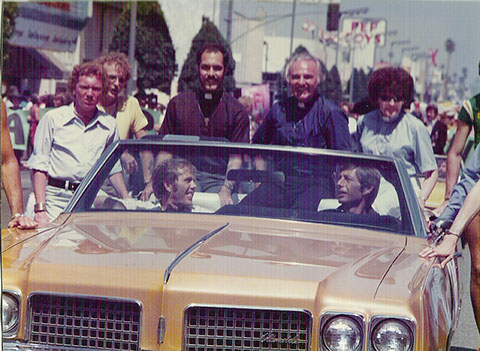

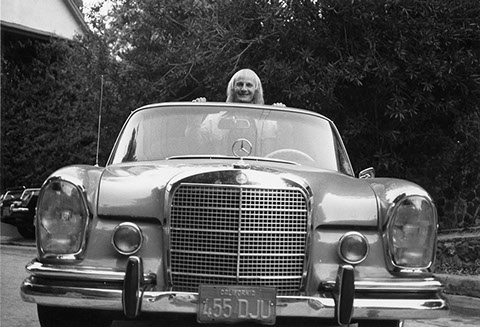
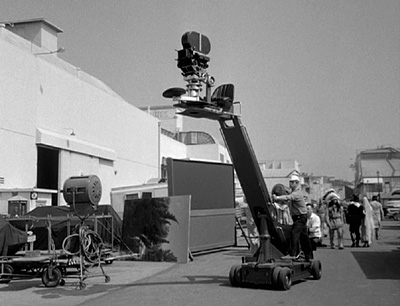
4 - 4
<
>